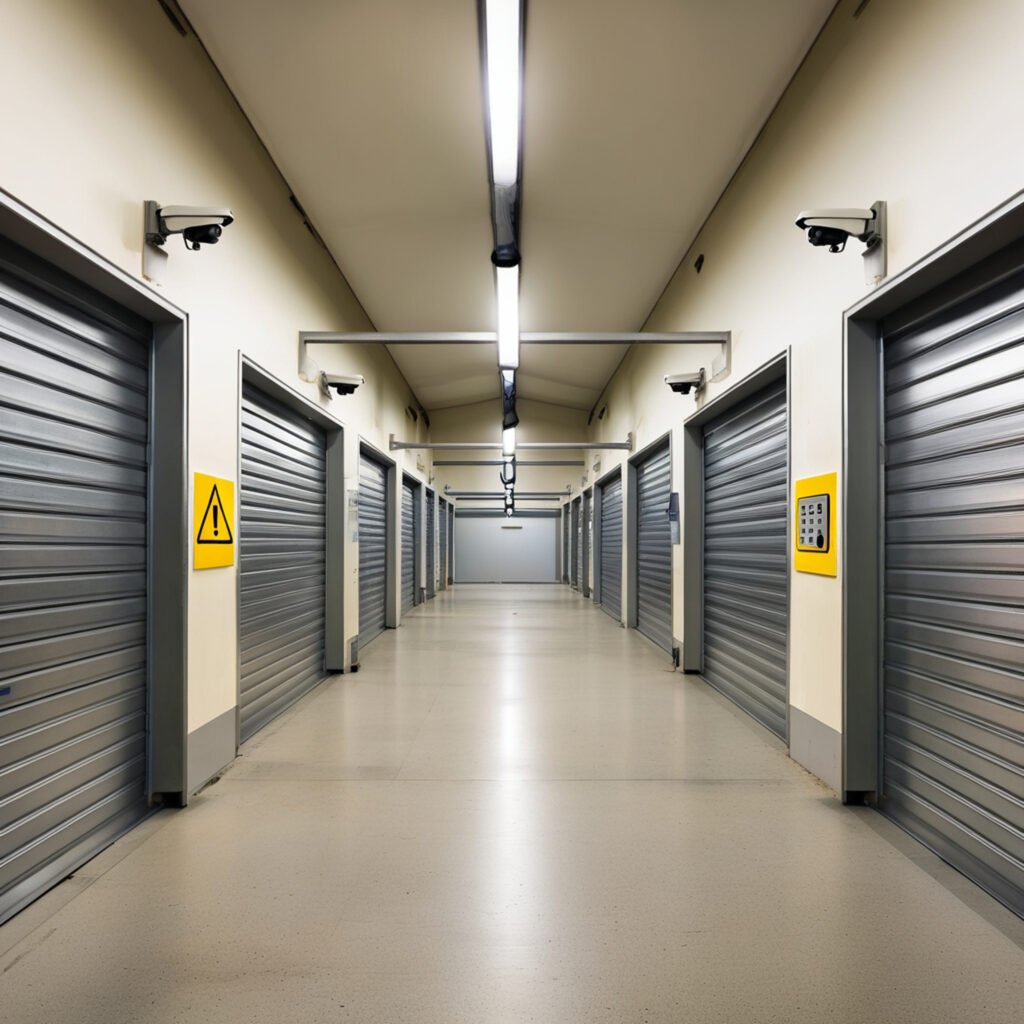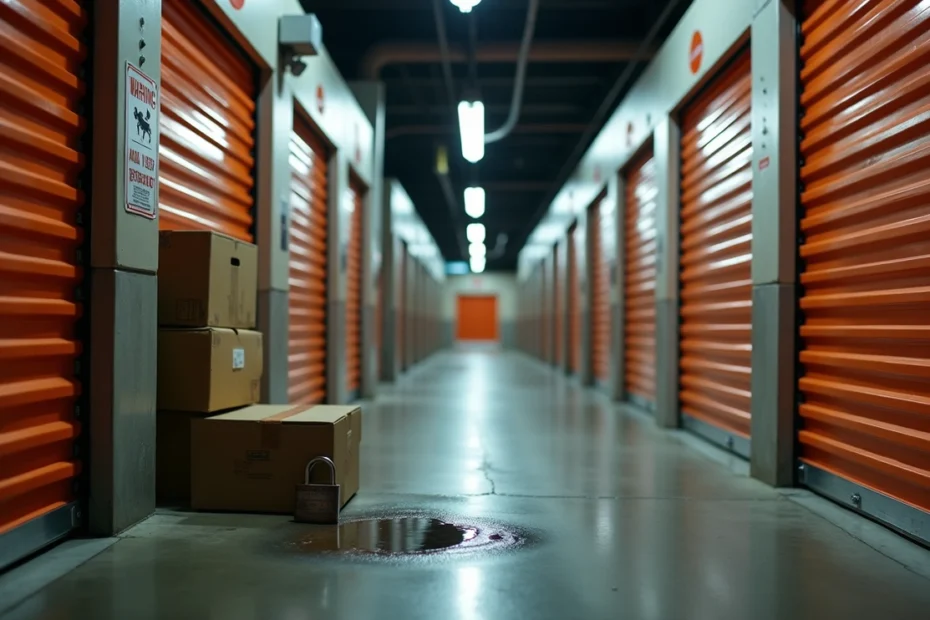Are storage units safe? This question needs more thought, especially since one in 10 U.S. households rents self-storage units. Most people drive past those rows of colorful doors along highways and industrial areas without thinking about what lies behind the marketing claims.
Safety standards differ a lot among the 58,000 self-storage facilities across America. The real safety of storage units depends on factors that owners rarely mention upfront. My research showed that public storage companies often hide mandatory insurance charges beyond the basic rental rate. The same goes for extra space storage fees – they can eat into your budget with admin costs, climate control expenses, and hefty late payment penalties. These facilities take up 2.3 billion square feet of American real estate, but do they offer enough safety to justify the extra costs? Let’s find out.
1. Not All Storage Units Are Equally Secure

My search for a storage space led me to find that storage facilities’ security standards are nowhere near consistent. The self-storage industry lacks uniform security regulations, which allows facility owners to set their own security measures. The definition of “secure” can mean something completely different from one facility to another.
No standard for security across facilities
Storage facilities don’t follow the same security protocols you’d find at banks or airports. Each owner’s security features depend on their budget, location, and business model. This creates a security lottery for customers. Some facilities have complete surveillance systems with dozens of high-resolution cameras that watch all entry points and hallways. Others might use just a few cameras at main entrances and leave other areas unmonitored.
How safe are storage units in reality?
Storage facilities can be safe, but this depends on both the facility’s and the renter’s precautions. Well-maintained facilities with good security systems rarely experience break-ins. Notwithstanding that, storage units face potential risks beyond theft:
- Fire hazards from poor wiring or improperly stored flammable materials
- Water damage from leaky roofs or flooding
- Pest infestations in poorly maintained facilities
- Environmental damage in non-climate-controlled units
The facilities’ poor background checks on neighboring renters create extra security concerns that might not be obvious right away.
What to look for in a secure facility
Your belongings’ protection depends on these key security features:
Perimeter Protection: The property needs sturdy fencing all around, not just at the front gate. Tall fences (at least six feet high) serve as the first defense against unwanted entry.
Access Control Systems: Personal access codes or key cards help track everyone who enters and leaves the facility. Stay away from facilities that use shared or generic passcodes – these increase security risks.
Video Surveillance: Good facilities use high-resolution cameras to monitor all entrances, hallways, and common areas—not just the front office. The property should have visible cameras with 24/7 monitoring.
On-Site Management: Staff presence deters break-ins better than most security measures. Their regular monitoring and quick response to suspicious activity are a great way to get protection.
Quality Lighting: Bright lights discourage criminals and ensure clear surveillance footage at night. Look for good lighting everywhere, especially near unit entrances.
Individual Unit Security: Tamper-resistant disk or cylinder locks protect substantially better than standard padlocks. Premium facilities sometimes offer individually alarmed units.
2. Hidden Fees That Compromise Your Budget
The fine print in storage unit contracts revealed some sneaky pricing tactics that happen way too often. That tempting $1 move-in special hides a maze of extra charges that could make your bill two or three times higher than expected.
Public storage hidden fees to watch for
Public storage facilities lure customers with cheap advertised rates before they hit them with surprise charges. You’ll face admin fees ($20-$30), required lock purchases ($20-$30), and steep late fees ($50-$60 if you’re over 30 days late). Set up deposits between $25-$45, add to your upfront costs. Those reasonable monthly rates become a real burden once these charges pile up.
Extra Space Storage’s hidden fees explained
Extra Space Storage and similar companies tack on admin, tech, and convenience fees beyond their advertised rates. Most locations charge setup fees of $10-$30. On top of that, they automatically sign you up for their insurance programs – you’ll need to opt out or pay monthly charges.
Insurance and climate control add-ons
Storage insurance runs $10-$50 each month based on coverage limits. You can’t rent without proof of insurance at most facilities. These policies leave out expensive items like jewelry, art, collectibles, and vehicles. Climate-controlled units cost a lot more – regular units run $60-$180 monthly, while climate-controlled spaces cost $75-$225.
Late payment penalties and access charges
Storage companies make good money from late fees, which they set at “the greater of $20 or 20% of monthly rent”. Miss your payments, and they’ll put “overlocks” on your unit – you’ll pay extra to get them removed. They charge for after-hours access, emergency help, and extended access, too. If you stop paying, you could lose everything – most places can auction your stuff after 30-90 days of missed payments.
3. Your Belongings May Be at Risk
My research into storage facilities revealed scary vulnerabilities that most renters never think about. Your possessions face multiple threats beyond simple theft, even with strong security measures in place.
Theft and break-ins: how common are they?
Break-ins remain a constant worry, despite what the industry claims. Storage facilities reported only 8.9% of break-ins or thefts in 2012. Some regions show by a lot higher rates. The top five states for storage theft are Colorado, Tennessee, Kentucky, Texas, and California. Thieves mostly cut locks, though sometimes they cut through walls to get into multiple units. Units in industrial areas or those with 24-hour access make easier targets for criminals.
Fire, mold, and water damage risks
Environmental hazards pose big threats beyond theft. Water damage costs reach £1 billion yearly. Mold runs on units with humidity above 50%. Poor wiring, inadequate sprinkler systems, and wrongly stored flammable materials create fire risks. Climate change has made wildfire dangers worse in several regions.
Are public storage units safe for valuables?
Experts say you should keep truly precious items somewhere else. High-value belongings need special protection that most units just can’t provide. Storage facilities don’t allow valuable items like jewelry, precious metals, important documents, and furs.
What insurance really covers (and what it doesn’t)
Standard homeowners’ policies usually protect stored items through “off-premises” personal property coverage. Protection caps at 10% of your total personal property coverage. Fire, lightning, theft, and vandalism make the list of covered perils. But typical exclusions cover floods, earthquakes, mold damage, vermin, and normal wear and tear. Off-premises coverage for a $75,000 policy might limit protection to only $7,500 for storage unit contents.
4. Facility Practices You’re Not Told About

Storage facilities rarely tell you everything about their operational practices beyond security and fees. Their hidden policies can affect your experience and stored items significantly.
Lack of background checks on neighboring renters
Your storage neighbors undergo minimal screening. Storage facilities usually check only basic identity and payment details. They skip criminal history or rental references. This means someone storing dangerous or prohibited items could occupy the unit next to yours.
Poor maintenance and pest control
Profit-driven facilities often skimp on maintenance. Leaky roofs remain unfixed for weeks. Their pest control consists of basic perimeter spraying instead of a detailed treatment plan. These facilities check units every three months at best, which lets problems grow undetected.
Limited access hours and emergency support
The “24/7 access” promise rarely holds true. Many facilities limit entry hours without clear disclosure. You’ll likely reach an answering service instead of getting real help after hours. Your belongings might be inaccessible during holidays or weekends – exactly when you need them most.
What happens if you miss a payment?
Missing payments leads to harsh consequences that facilities don’t explain well. They can auction your belongings after just 30-90 days of non-payment. The facility can add late fees, block your access, and lock your unit before that – all without involving courts.
Conclusion
Storage units aren’t as safe and hassle-free as their ads make them sound. My research shows huge differences in security between facilities. Some offer complete protection, but others give you nothing more than a basic padlock and empty promises. That attractive $60 monthly rate can quickly jump to over $100 with admin fees, required insurance, and extra charges for climate control.
Theft isn’t the only threat to your stuff. Poorly maintained facilities put your belongings at risk from water damage, fires, and pest problems. The lack of background checks on other renters creates safety risks that most customers never think about.
You should ask direct questions about security and get into all the hidden fees before signing anything. Take time to think about whether your items really need storage. Remember – these places can sell your stuff at auction after missing just one payment in most states.
The self-storage business runs on making things easy with minimal oversight. Some places definitely keep high standards, but many take advantage of what customers assume about safety and honesty. Smart customers stay skeptical about storage units instead of blindly trusting. Your valuable possessions deserve a storage solution you can trust completely.

